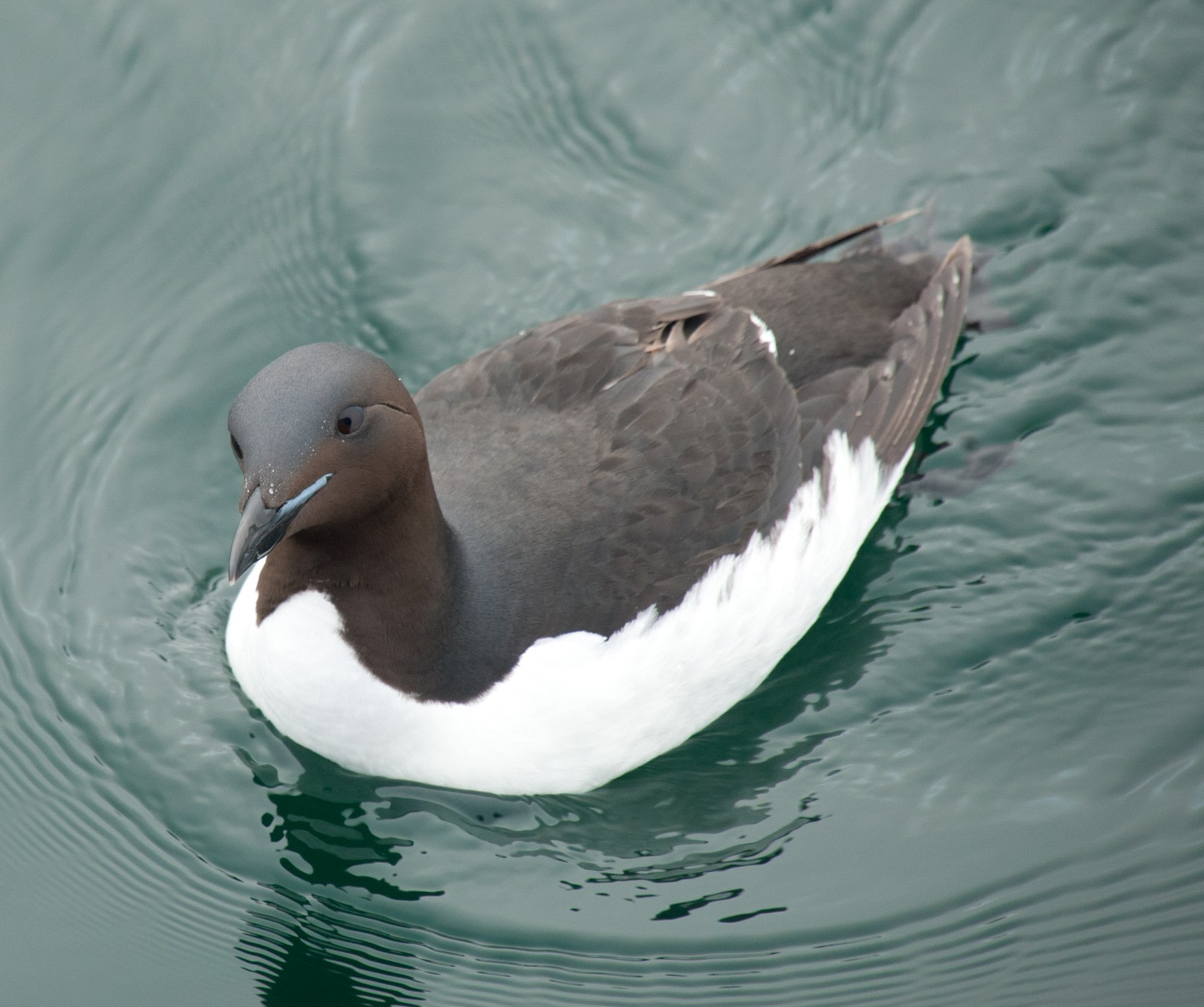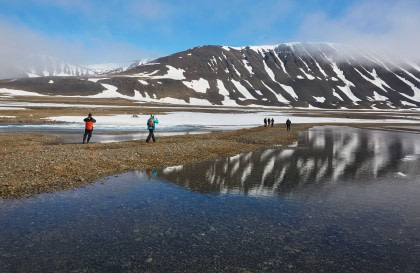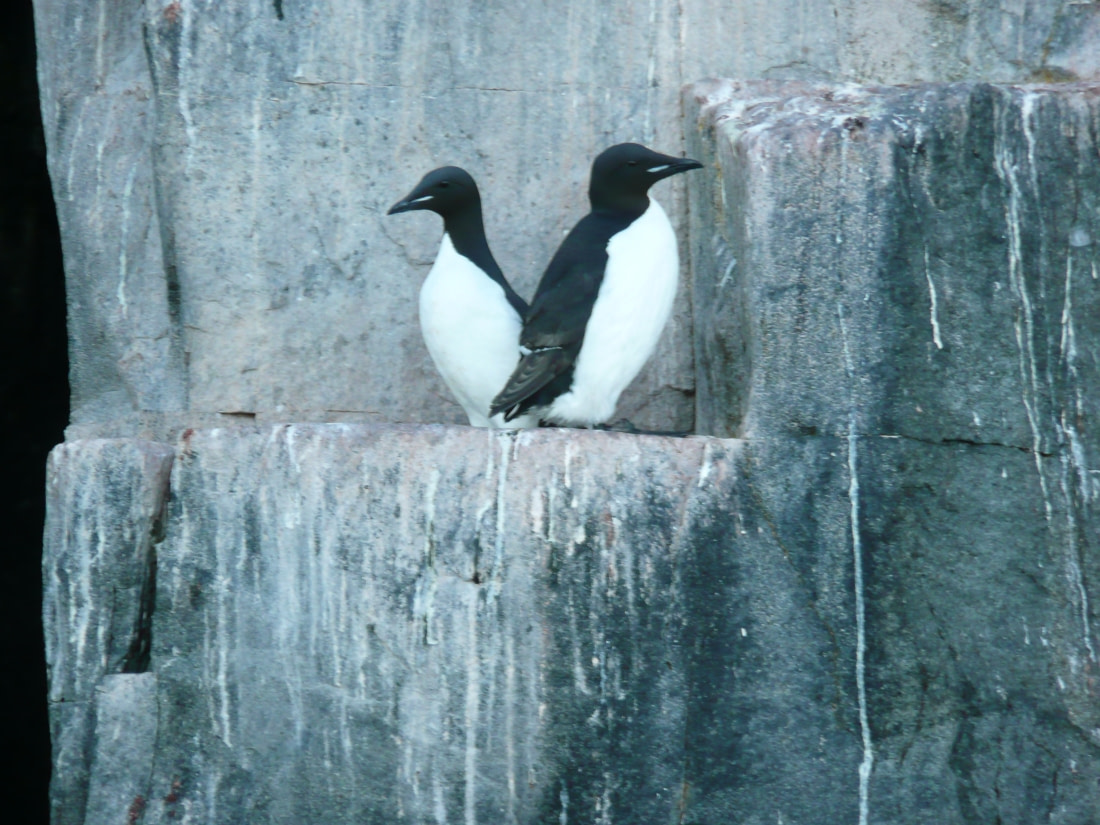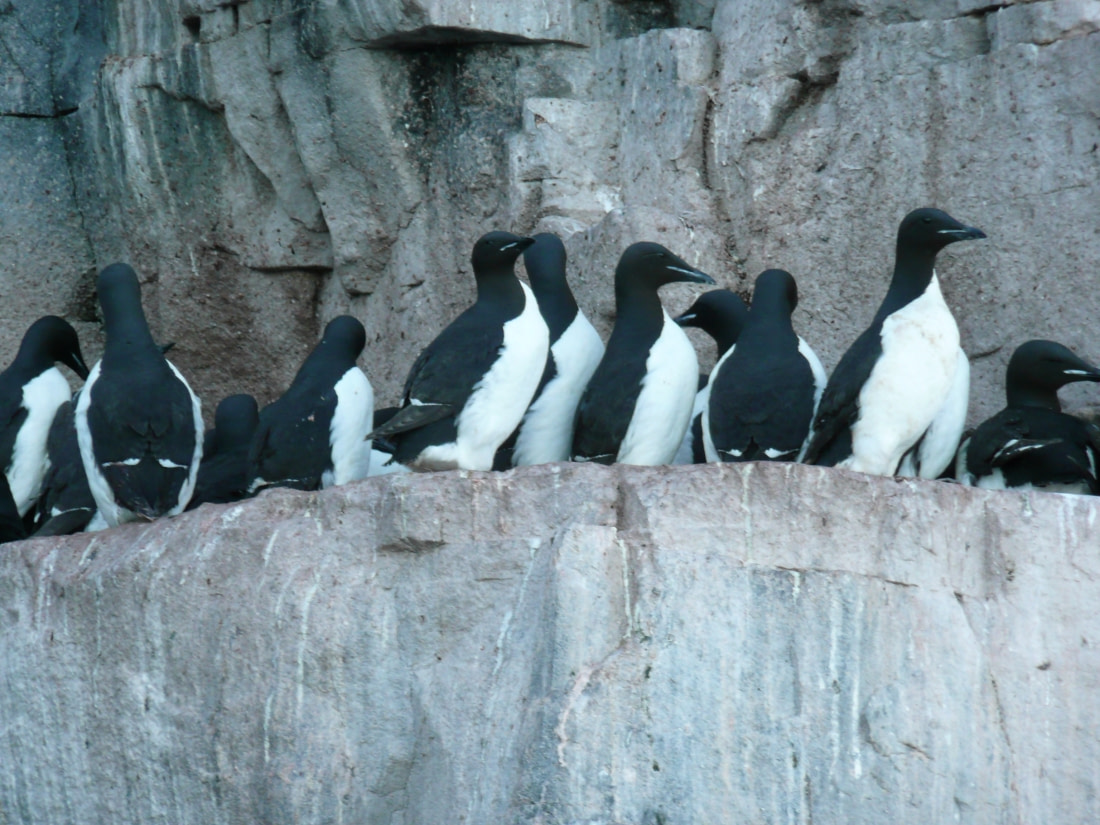Name: Thick-billed Murre, Brünnich’s Guillemot (Uria lomvia)
Length: 40 to 50 cm.
Weight: 730 to 1,500 g (Pacific race larger than Atlantic race).
Location: Polar and sub-polar regions of northern hemisphere.
Conservation status: Least Concern.
Diet: Fish, mollusks, crustaceans, marine worms.
Appearance: Black head, back, neck, and wings. White underparts. Long and pointed bill. White stripe horizontally along the bill.
How do Thick-billed Murres feed?
Thick-billed Murres are strong divers, able to reach depths of 150 metres and stay underwater for upwards of 4 minutes per dive. The average dive is between 20 and 40 metres.
Thick-billed Murres often venture a long distance from their homes to find foraging – sometimes as far as 100 km away.

Are Thick-billed Murres social?
Thick-billed Murres form tightly-packed colonies during their breeding season.
How fast do Thick-billed Murres fly?
Thick-billed Murres can reach speeds of 80 km per hour. However because of their short wings they are not very maneuverable and it takes considerable effort for them to take off.
What are Thick-billed Murre birthing rituals like?
Thick-billed Murres form immense breeding colonies along cliff edges, the numbers sometimes reaching into the millions. They arrive at their nesting sites in spring but the actual egg-laying does not begin until around the beginning of June.
The “nests” are located on ledges and along steep cliffs. The nests themselves are not really nests – the eggs are laid on the bare rock.
One egg is laid. Both parents take turns incubating the egg (about a month) and raising the hatchling. Since the Thick-billed Murres require a tremendous amount of energy to take off into flight the parents are usually only able to feed the chick with one bit of food at a time.
Chicks are ready to leave the cliffs after three-quarters to one full month. They leave home by simply jumping off the cliff to plummet to the waters below. The male will stay together with the chick at sea another two or so months to teach the young how to fend for itself.

How long do Thick-billed Murres live?
Thick-billed Murres live about 20 years in the wild.
How many Thick-billed Murres are there today?
Worldwide estimates place the Thick-billed Murre population at anywhere between 15 million and 20 million individuals.
Do Thick-billed Murres have any natural predators?
Thick-billed Murre chicks and eggs can be preyed upon by Glaucous Gulls, Arctic Foxes, and Common Ravens.

7 Bountiful Thick-billed Murre Facts
- Thick-billed Murres have the highest flight cost per body size of any animal (they use up the most energy to move a specific distance).
- Murres are the largest existing members of the Alcidae family since the extinction of the Great Auks in the 1800s.
- Thick-billed Murres claim the smallest individual territory of any bird in the world, only needing less than 0.5 metres per bird’s nesting space.
- Thick-billed Murres are one of the most numerous seabirds in the northern hemisphere.
- Murre colonies are also known as “loomeries.”
- Thick-billed Murres (Brünnich's Guillemots) are named after the Danish zoologist Morten Thrane Brünnich.
- Scientists aren’t quite sure how the Murres survive their deeper dives. It’s theorised that they absorb extra gasses into their bones’ vascular structure. Once surfaced, the gasses are slowly released back into the body over time in order to avoid lung collapse and diving sickness.












